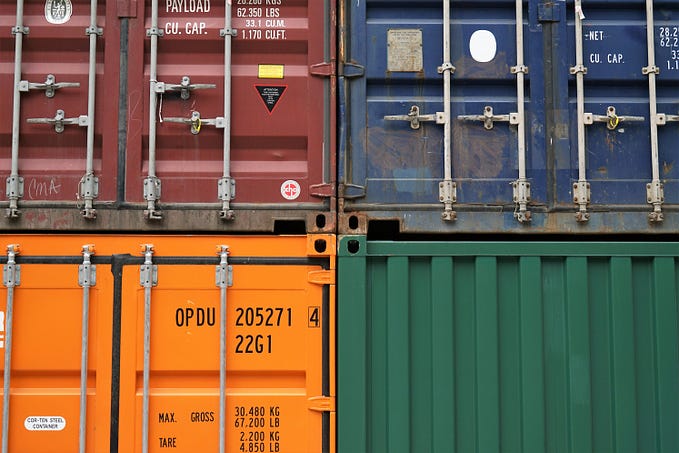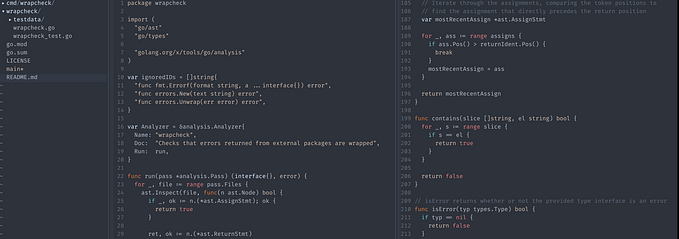Tokenization: The Future of Asset Ownership and Investment
Welcome to the transformative world of tokenization, where asset ownership and investment boundaries are being redefined. Whether you’re a small business owner seeking innovative fundraising avenues or a large corporation exploring new ways to engage with your stakeholders, tokenization offers a wealth of opportunities.
In this section, we’ll explore the practical applications of tokenization and how they can revolutionize your business. We’ll delve into real-world examples, demystify complex concepts, and provide actionable insights to help you harness the power of tokenization. From fractional ownership and increased liquidity to enhanced transparency and programmable functionality, we’ll uncover how tokenization can empower your business to thrive in the digital age.
In the ever-evolving landscape of finance and technology, tokenization is emerging as a groundbreaking concept that can redefine how we perceive and interact with assets. At its core, tokenization digitally represents an asset's ownership on a blockchain. It’s like creating a digital twin for a real-world asset, whether a piece of real estate, a work of art, or even a share in a company. This digital representation, or token, can be traded, fractionalized, or programmed with smart contracts, unlocking many new possibilities.
The convergence of blockchain technology and traditional finance has paved the way for tokenization to gain momentum. With its inherent transparency, security, and immutability, blockchain provides the ideal infrastructure for securely representing and transferring ownership of assets. This has led to a surge of interest in tokenization across various industries, from real estate and art to supply chain management and intellectual property.
As we delve deeper into this article, we will explore the multifaceted nature of tokenization and its potential to disrupt traditional business models, democratize investment opportunities, and foster innovation. We will examine the key aspects fueling tokenization's excitement, including fractional ownership, increased liquidity, enhanced transparency and security, programmable functionality, and the emergence of new business models. Through theoretical explanations, real-world examples, and expert insights, we aim to comprehensively understand this transformative force and its implications for the future of asset ownership and investment.
Part I: Fractional Ownership and Democratization of Investment
Historically, investing in high-value assets like real estate, fine art, or private equity has been the affluent domain. The high cost of entry and illiquidity of these assets have created barriers for smaller investors, limiting their access to potentially lucrative opportunities. Tokenization is poised to dismantle these barriers by enabling fractional ownership, dividing assets into smaller, more affordable units represented by tokens.
This democratization of investment can potentially revolutionize how individuals participate in various markets. It allows for greater accessibility, enabling a more comprehensive range of investors to diversify their portfolios and gain exposure to previously exclusive asset classes. Imagine owning a fraction of a Picasso painting or a share in prime commercial property made possible through tokenization.
In this section, we will explore the concept of fractional ownership in-depth, examining its benefits and challenges. We will delve into specific examples of real estate tokenization platforms, showcasing how they make property investment more accessible and inclusive. We will also discuss the tokenization of other asset classes, such as art, collectibles, and intellectual property, and analyze their impact on the investment landscape. Furthermore, we will address the regulatory considerations and potential hurdles that need to be overcome for fractional ownership to reach its full potential.
Part II: Increased Liquidity and Market Transformation
Liquidity, or the ease with which an asset can be bought or sold without affecting its price, is crucial in determining its attractiveness to investors. Many asset classes have traditionally suffered from illiquidity, making it difficult for them to trade and limiting their growth potential. Tokenization solves this problem by converting illiquid assets into digital tokens that can be traded seamlessly on blockchain-based platforms.
This increased liquidity can have a profound impact on various markets. It can unlock value in previously illiquid assets, making them more appealing to investors and potentially leading to price appreciation. It can also facilitate faster and more efficient trading, reducing transaction costs and enabling greater market participation. Moreover, the global nature of blockchain allows for cross-border trading without the need for traditional intermediaries, further enhancing liquidity and accessibility.
In this section, we will explore the relationship between liquidity and market dynamics, highlighting the transformative potential of tokenization. We will examine specific examples of how tokenization has increased liquidity in real estate, private equity, and other asset classes. We will also discuss the emergence of new financial instruments and trading strategies enabled by tokenization and analyze their implications for investors and market participants. Finally, we will address the regulatory and compliance frameworks that need to be established to ensure the smooth functioning of tokenized markets.
Part III: Enhanced Transparency and Security: Building Trust and Reducing Fraud
Transparency and security are paramount in any financial transaction or asset ownership scenario. Historically, opacity and the potential for fraud have plagued many industries, leading to mistrust and inefficiencies. Tokenization, built on the foundation of blockchain technology, offers a robust solution to these challenges by providing inherent transparency and security.
Blockchain’s decentralized and immutable ledger ensures that every transaction involving a tokenized asset is recorded and verifiable. This creates an auditable trail that can be traced back to the origin of the asset, enhancing transparency and reducing the risk of fraud or misrepresentation. Additionally, the cryptographic algorithms used in blockchain technology provide robust security, making it extremely difficult for bad actors to tamper with data or conduct unauthorized transactions.
This section will explore how blockchain technology ensures transparency and immutability in tokenized transactions. We will explore real-world examples of companies leveraging tokenization to improve supply chain management, track the provenance of goods, and combat counterfeiting. We will also discuss the role of smart contracts in automating ownership rights and obligations, further enhancing security and trust. Furthermore, we will address potential data privacy and security concerns in tokenized environments and examine the measures to mitigate these risks.
Part IV: Programmable Functionality and Smart Contracts
Tokenization goes beyond merely representing ownership of an asset digitally. It also enables programmable functionality through the use of smart contracts. Smart contracts are self-executing contracts with the terms of the agreement directly written into lines of code. These contracts can be embedded within tokens, automating various aspects of ownership, such as royalty payments, profit-sharing, or voting rights.
This programmable functionality offers unprecedented flexibility and control over how assets are managed and governed. It streamlines processes, reduces the need for intermediaries, and enables new forms of interaction with assets. For example, an artist can tokenize their artwork, embedding a smart contract that automatically pays them a royalty each time the artwork is resold. This ensures fair compensation and empowers creators to maintain ongoing engagement with their audience and collectors.
This section will explore smart contracts' intricacies and their wide-ranging tokenization applications. We will examine how they can automate royalty payments, profit-sharing, and other financial transactions. We will also discuss their role in enabling tokenized governance models, where token holders can participate in decision-making. Additionally, we will showcase innovative use cases of smart contracts in various industries and analyze their potential impact on business models and operations.
Part V: New Business Models and Tokenized Communities
Tokenization is not just about transforming existing industries; it’s also about creating entirely new business models and fostering innovative communities. Decentralized Autonomous Organizations (DAOs) are a prime example of how tokenization can lead to new forms of governance and collaboration. In a DAO, stakeholders hold tokens that grant them voting rights, enabling decentralized decision-making without a traditional hierarchical structure.
Beyond DAOs, tokenization is empowering the creation of tokenized communities, where ownership and value creation are distributed among members. This can take various forms, such as artists tokenizing their work to build community-driven economies or projects issuing tokens to incentivize participation and contribution.
This section will explore the rise of DAOs and impact on traditional governance models. We will examine case studies of successful DAOs and analyze their strengths and weaknesses. We will also discuss the emergence of tokenized communities and their potential to revolutionize how creators and fans interact. Furthermore, we will delve into new revenue models and monetization opportunities enabled by tokenization and discuss their implications for various industries and individuals.
Part VI: Challenges and Future Outlook
While tokenization holds immense promise, its widespread adoption and full potential are contingent upon overcoming various challenges and navigating an evolving regulatory landscape. We will examine tokenization's key hurdles and explore its future outlook, considering this transformative technology's potential benefits and risks.
Regulatory Landscape and Compliance
One of the primary challenges facing tokenization is the need for clear and consistent regulatory frameworks across different jurisdictions. As tokenized assets blur the lines between traditional asset classes and introduce new forms of ownership and investment, regulators grapple with classifying and governing them.
This regulatory uncertainty can create barriers to entry for businesses and investors, hindering the growth and adoption of tokenization. Governments and regulatory bodies must develop comprehensive frameworks that address the unique characteristics of tokenized assets, ensuring investor protection while fostering innovation.
Technological Challenges and Scalability
While blockchain technology offers numerous benefits, it also faces technological challenges that need to be addressed for tokenization to scale effectively. Scalability, or the ability to handle a large volume of transactions efficiently, is a particular concern. As the number of tokenized assets and transactions increases, blockchain networks need to be able to process them without compromising speed or security.
Additionally, interoperability, or the ability of different blockchain networks to communicate and exchange data seamlessly, is crucial for enabling the free flow of tokenized assets across various platforms and ecosystems. Overcoming these technological challenges will be essential for unlocking the full potential of tokenization and facilitating its widespread adoption.
Public Awareness and Adoption
Despite the growing excitement surrounding tokenization, public awareness and understanding of this technology still need to be improved. Many individuals and businesses are still unfamiliar with tokenization, its benefits, and its potential applications. This lack of awareness can create hesitancy and resistance to adoption, particularly in traditionally slow industries that need to be faster to embrace new technologies.
Education and outreach initiatives will be crucial in raising public awareness and fostering the adoption of tokenization. Demystifying the technology, explaining its benefits in simple terms, and addressing people's concerns or misconceptions is essential. Building trust and understanding can pave the way for broader acceptance and utilization of tokenization across various sectors.
The Future of Tokenization: Predictions and Trends
The future of tokenization is bright, with experts predicting significant growth and adoption. As blockchain technology evolves and matures, we expect to see even more innovative tokenization applications emerge. The possibilities are endless, from tokenizing carbon credits to fractional ownership of renewable energy projects.
One trend is the increasing convergence of tokenization and decentralized finance (DeFi). DeFi platforms leverage tokenization to create new financial instruments and enable peer-to-peer transactions without intermediaries. This trend will likely accelerate, leading to greater financial inclusion and accessibility.
Another trend is the growing interest in tokenized communities and DAOs. As more people recognize the power of decentralized governance and collective ownership, we expect to see a surge in creating these communities across various industries and interests.
Potential Impact on Various Industries
Tokenization has the potential to disrupt and transform a wide range of industries. In real estate, it can democratize investment, increase liquidity, and streamline transactions. In art and collectibles, it can enable fractional ownership, enhance transparency, and combat fraud. In supply chain management, it can improve traceability, authenticity, and efficiency.
Furthermore, tokenization can revolutionize intellectual property rights management, enabling creators to monetize their work directly and engage with their audience in new ways. It can also transform the music industry, giving artists greater control over their music and enabling new forms of fan engagement and revenue generation.
Conclusion: Embracing the Transformative Power of Tokenization
Tokenization represents a paradigm shift in how we perceive and interact with assets. By enabling fractional ownership, increasing liquidity, enhancing transparency and security, offering programmable functionality, and fostering new business models, it has the potential to reshape industries and democratize access to investment opportunities.
While challenges remain, the future of tokenization is full of promise. As technology advances and regulatory frameworks evolve, we expect to see even more innovative applications and widespread adoption of tokenization across various sectors. By embracing this transformative force, we can unlock new possibilities in ownership, investment, and beyond. The future of asset management and value creation is being rewritten, and tokenization is at the forefront of this revolution.
NOT INVESTMENT ADVICE
Any views, opinions expressed, and consulting services provided are for educational purposes only; you should not construe any such information or other material as legal, tax, investment, financial, or any other advice. Sessions do not constitute a recommendation or endorsement of any particular cryptocurrency asset.
#SmallBusinessTokenization #TokenizeYourBusiness #FractionalOwnershipForSMBs #UnlockingLiquidity #SMBInnovation #BlockchainForSmallBusiness #DemocratizingInvestment #CommunityOwnership #NextGenFundraising #SmallBizGrowth
Liquidity | Transparency | Automation | Decentralization | Innovation









